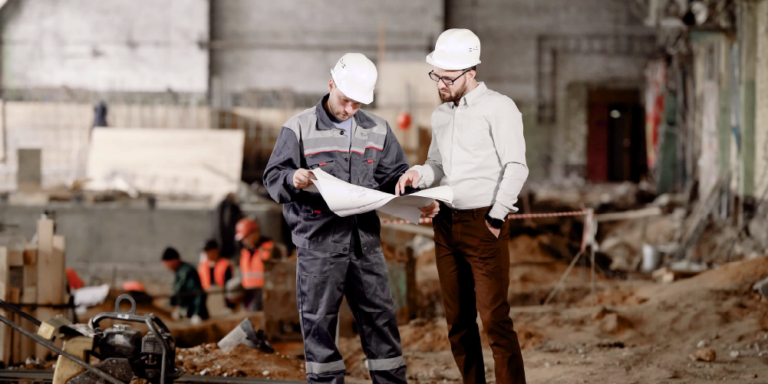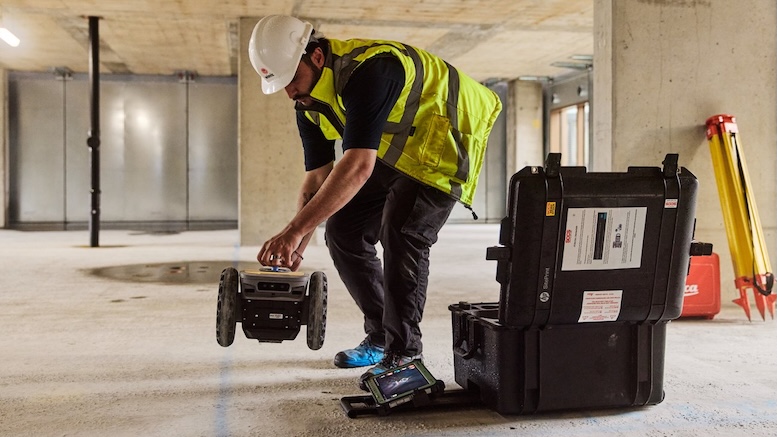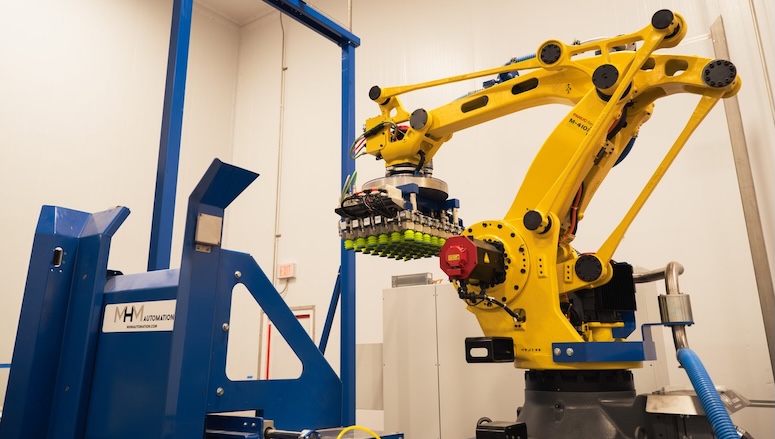— 11 min read
Superintendent vs Project Manager: Roles, Responsibilities & How They Work Together


Last Updated Jun 13, 2024

Scott Bornman
Principal, Operational Excellence
15 articles
Scott Bornman is a managing strategic product consultant at Procore Technologies. Scott began his long construction career after a successful 8+ years in the U.S. Army, where he selected to be U.S. Army Recruiter following Desert Shield/Desert Storm. Scott has had many roles in the construction field since then, working his way from a project superintendent, to an owner's rep, to a senior project manager and even Vice President of Construction at Bognet Construction and Director of Construction at Plaza Construction before joining the team at Procore.

James Hamilton
Writer & Producer
85 articles
James Hamilton is a writer based in Brooklyn, New York with experience in television, documentaries, journalism, comedy, and podcasts. His work has been featured on VICE TV and on The Moth. James was a writer and narrator for the show, VICE News Tonight, where he won an Emmy Award and was nominated for a Peabody Award.
Last Updated Jun 13, 2024

The roles of project manager and superintendent are crucial for completing a construction project as close to on budget and on schedule as possible. While it’s important that competent and hardworking people fill the jobs, it’s also important to understand the relationship between the two roles.
Project managers and superintendents bring different skill sets, experiences, and perspectives to each project. Learning these differences — and how to leverage them as strengths —can help create a construction management team that is cohesive and effective. For people considering pursuing a career in construction, knowing the differences and similarities between the two jobs can help make an informed decision.
This article covers the differences between a superintendent and project manager, their respective career trajectories and tips to leverage the relationship for optimal project execution.
Table of contents
The Project Manager Role
The project manager (PM) is responsible for the administrative oversight of a construction project, from planning and budgeting, to managing resources, to tracking progress and closeout. Put simply, the project manager plans how to complete a project and makes sure it happens. They are focused on the project being delivered on schedule, on budget, and to the owner's satisfaction.
Project Manager Responsibilities During Construction Phases
Preconstruction:
- Defining milestones
- Planning
- Scheduling
- Budgeting
- Selecting members of the project team
- Acquiring permits
Construction:
- Monitoring progress
- Adjusting schedule and budget as needed
- Managing resources
- Regularly meeting with and facilitating communication between stakeholders
- Managing permits
Closeout:
- Coordinating inspections
- Managing and collecting closeout documents
- Facilitating communication between stakeholders
- Managing handover
Project managers generally work from an office and report to a senior project manager, project executive, or chief operating officer. They usually oversee numerous projects at a time and should have effective systems for organization and communication so they can ensure each job is progressing, owners feel cared for, and the people working on each job have what they need.
Superintendent Roles
The superintendent is responsible for the day-to-day work and operations on a jobsite, including managing subcontractors, checking for safety, and monitoring the quality of work. The superintendent primarily focuses on ensuring the project is delivered safely and according to the approved plans and specifications.
Superintendent Key Responsibilities During Construction Phases
Preconstruction:
Superintendents often aren’t brought on until construction, though they are sometimes asked to:
- Review plans
- Select crew members and subcontractors
Construction:
- Oversee daily operations
- Conduct routine inspections for quality and safety
- Serve as main point of contact for subs, labor, and suppliers
- Communicate with project team to express concerns, share adjustments and provide progress updates
- Coordinate resources to avoid delays
Closeout:
- Managing the punch list
- Attending inspections
- Coordinating or conducting trainings
- Assisting in collecting closeout documents
- Assisting in handover
Superintendents work on the jobsite, and usually focus on one job at a time. They often report to a general superintendent, a director of field operations, or a chief operating officer, though they are often required to regularly communicate with and provide updates to the project team, including the project manager.
How Project Managers and Superintendents Work Together
Project managers and superintendents should meet regularly, as often as every day, to monitor progress, address issues and prepare for upcoming phases of the project. The project manager brings an understanding of the master schedule, the budget and administrative considerations such as permits. The superintendent brings an understanding of building methods and potential challenges and has relationships with the crew and subcontractors.
The superintendent focuses on what’s happening day-to-day, while the project manager focuses on the big picture. But these viewpoints should complement each other instead of introducing conflicting priorities.
For example, on a project that’s supposed to have a concrete pour in two weeks, the PM might be working to ensure there’s a purchase order for the vendor, acquire a valid permit, notify the safety team, and coordinate with the third party contractor who’ll conduct the concrete tests. The PM might flag the pour in a meeting so the superintendent knows what to expect and knows that they will have everything needed to execute the work safely and effectively on the day.
Respecting Each Other's Roles
The project manager often expects superintendents to share updates and run adjustments by them. Project managers are often responsible for selecting and hiring the superintendent, and, if there was a hierarchy of roles, are often above the superintendent.
However, effective relationships between PMs and superintendents are usually more like peers, with respect for each other’s expertise and distinct roles.
People in these roles are expected to collaborate and communicate, and the power dynamics of a supervisor/direct report relationship can make that hard to do. Many companies handle this by having the roles report to different people, so that issues of promotion, raises or workplace concerns can be resolved without complicating the relationship.
How To Become a Project Manager
Project managers often work with or for a construction management firm and are assigned specific projects to manage and supervise. Sometimes, owners will hire their own project manager to oversee the administrative side of a project while keeping their best interest in mind.
| Required Skills | |
| Planning | PMs need to be able to define milestones and devise quality plans for projects that are sometimes extremely complex. |
| Organization | A PM needs to coordinate many variables and resources, including people, money, and a seemingly endless number of documents. PMs should be skilled at creating systems of organization that allow them to effectively manage many projects at once. |
| Problem-solving | When issues do arise, PMs should be able to help explore solutions by providing the potential implications for schedule, budget, and the relationship with the owner. A PM doesn’t need to know the answer to every question or how to solve every problem, but they should feel comfortable saying, “I don’t know,” and know who to ask to find the answer. |
| Communication | A PM needs to be able to convey ambitious visions, and get people with differing priorities invested in a plan. They should be able to effectively provide feedback, receive feedback, and help find solutions to problems that consider the perspectives of many stakeholders. |
| Team building | The PM should understand the different roles on a project, what’s required to be successful at each, and know how to find the right people for them. |
| Relationship building | Project managers should know how to foster relationships, learn what drives people, and how to take the perspective of others. They should be able to share credit when things go right and accept responsibility when things don’t. |
Career Trajectory of a Project Manager
A project manager usually has a degree in construction sciences or construction management. They often start their careers as project engineers, and some go to become an assistant project manager (APM), which allows them to gain experience managing limited parts of a project.
Becoming a project manager is rarely the final stop on someone’s professional journey, as many PMs are often working towards moving up to become a senior project manager, where they will oversee more or larger projects. From there, they might work to become a project executive and a select few might strive to become a chief operating officer. A small group of people who started as PMs use their skills to start their own companies. In many cases, upward professional movement for a project manager can take them further and further from working in the field.
Project managers may make less money on a given project than the superintendent, because they are working on many projects and aren’t as involved on a daily basis as the superintendent. However, project managers will have more opportunities over the course of their career, to elevate their income and their job title.
How to Become a Superintendent
Superintendents often work for a construction management firm or for themselves, and are either assigned or hired for a specific project. They are expected to oversee the project for its duration. They are often brought in after a contract has been accepted, though they are sometimes consulted while estimates and plans are being developed.
| Required Skills | |
| Knowledge of Every Part of Construction | Superintendents oversee every part of the build and usually manage most people working on the project. They should be able to coordinate meeting the needs of different trades and have an understanding of every part of the job, including the roles, processes, and equipment. Superintendents also conduct routine inspections on a nearly daily basis. They should know what they’re looking for, in regards to safety, common challenges, and criteria for success. |
| Communication | Superintendents need to be direct on what needs to be done and, at times, what’s not going well. They are often communicating in stressful situations and need to be able to quickly diagnose problems and convey information on how to address it. They should also be able to communicate with the project team to provide progress updates and address concerns. |
| Relationship building | A superintendent works with most people on the jobsite, so they need to be able to build relationships with many different types of people. |
| Problem solving | Superintendents are often the first line of defense when problems arise, and often identify the problems themselves while doing routine inspections. They should have an array of ideas for how to address issues that don’t alter a budget or the project timeline and know when to elevate a problem to the project team. |
| Practicality | Superintendents need to make things happen. They are often executing plans that can appear complicated and include many variables. They need to be able to identify ways to get things done, no matter what, and keep a project moving forward. |
Career Trajectory of a Superintendent
Superintendents often get their position after years of experience on job sites, as a worker or subcontractor. The position usually doesn’t require a college degree.
Superintendents are usually committed to becoming great at building things, so their career usually stays close to the field, even as they advance. Superintendents often advance by becoming a general superintendent, who might oversee many superintendents. From there, they might become a director of field operations. The room for advancement is limited compared to the path of project manager but superintendent pay is often solid and can involve bonuses for delivering projects ahead of schedule or under budget.
Best Practices For Collaboration Between PMs and Sups
The PM sets the vision; the sup gets it done. The PM does the paperwork; the sup does the field work. The PM is thinking ahead, and the sup is handling what’s being done right now. However you think of the dynamic, there are a few things that can help cultivate this relationship into something positive and complementary.
Involve the superintendent ASAP.
It’s easier said than done, but the sooner a superintendent can get involved, the more they’ll likely bring to the project. Getting the superintendent involved as soon as possible can help get the crew mobilized, aligned, and ready to gain valuable momentum as soon as the project begins.
Project managers will often try to ask a superintendent to provide feedback or insight on a bid as it is being made. This helps to improve the bid, assess constructability, and gather valuable information. This also allows superintendents to begin to build their ideal team of subcontractors or foremen, which can translate to later success and cohesion.
Trust each other.
The project manager has deep knowledge on the direction of the project and the plans, and the superintendent knows how to build things and get things done. Both people should make an effort to value the other’s insights and trust that, if they’re bringing something up, it’s for good reason. This is particularly true for the project manager, who should be deliberate about making space for the superintendent to share their expertise and trust their takes.
Meet regularly.
The PM and the superintendent should meet on a regular basis, often every day. Open lines of communication builds trust, allows each person to share their expertise, and addresses issues on the job as soon as possible.
Be humble.
The success of this working relationship is dependent on both people being able to put their egos aside to share credit for successes, assume responsibility for failures, ask for help, and foster a shared sense of teamwork and camaraderie.
Collaborate to get ahead of issues.
Project managers have a view into the future that superintendents do not. Meetings should cover work that’s a few weeks in the future, so issues can be caught and addressed without delaying the project. This creates a satisfying dynamic of the PM clearing the way for superintendents to fulfill their day-to-day responsibilities.
Construction Teamwork: Build a Solid Foundation With the Right Team
Choosing a Career Path
For someone considering a career in construction, it’s valuable to evaluate the path of both the project manager and the superintendent. This can be done by spending time on a job site to see what each role is doing and what elements of their work seems most fulfilling. Some people will ask to shadow a superintendent or project manager, or work as a laborer or assistant project manager.
Both jobs are crucial to successfully completing a construction project. Some companies even allow people to move between the two positions over their career, ultimately making them more well-rounded project contributors. Each role can be demanding, so the key is pursuing the most fulfilling and exciting one.
Was this article helpful?
Thank you for your submission.
100%
0%
You voted that this article was . Was this a mistake? If so, change your vote
Scroll less, learn more about construction.
Subscribe to The Blueprint, Procore’s construction newsletter, to get content from industry experts delivered straight to your inbox.
By clicking this button, you agree to our Privacy Notice and Terms of Service.
Thank you!
You’re signed up to receive The Blueprint newsletter from Procore. You can unsubscribe at any time.
Categories:
Written by

Scott Bornman
Principal, Operational Excellence | Procore Technologies
15 articles
Scott Bornman is a managing strategic product consultant at Procore Technologies. Scott began his long construction career after a successful 8+ years in the U.S. Army, where he selected to be U.S. Army Recruiter following Desert Shield/Desert Storm. Scott has had many roles in the construction field since then, working his way from a project superintendent, to an owner's rep, to a senior project manager and even Vice President of Construction at Bognet Construction and Director of Construction at Plaza Construction before joining the team at Procore.
View profile
James Hamilton
Writer & Producer
85 articles
James Hamilton is a writer based in Brooklyn, New York with experience in television, documentaries, journalism, comedy, and podcasts. His work has been featured on VICE TV and on The Moth. James was a writer and narrator for the show, VICE News Tonight, where he won an Emmy Award and was nominated for a Peabody Award.
View profileExplore more helpful resources

Harnessing Smart Construction Technology for Future Growth
Augmenting human intelligence with smart technology in construction makes it possible to tackle the considerable challenges of building the structures society demands. To adapt to client expectations while maintaining profitability,...

Mastering Capital Project Risk Management Across the Project Lifecycle
Capital projects — construction of significant infrastructure such as highways, utilities, or large-scale structures like hospitals or office buildings — have long timelines and with longer construction time comes greater...

Automation in Construction: Transforming the Future of Building
Technological advancements empower the construction industry to tackle complex projects and drive the global demand for sustainable, feature-rich structures technology makes possible. From design to closeout, construction automation is enabling...

Bid Management Software: Key Features & How to Choose the Right Fit
Bidding on construction projects can be a complex process. Sourcing appropriate bids and requests for proposals, analyzing bid documents, making sure estimates, preliminary schedules, and other mandatory requirements are met...
Free Tools
Calculators
Use our calculators to estimate the cost of construction materials for your next project.
Templates
Find a template to help you with your construction project tasks.
Material Price Tracker
Get the latest U.S. retail prices and view historical trends for common building materials.
Glossary
Explore key terms and phrases used in the industry.
